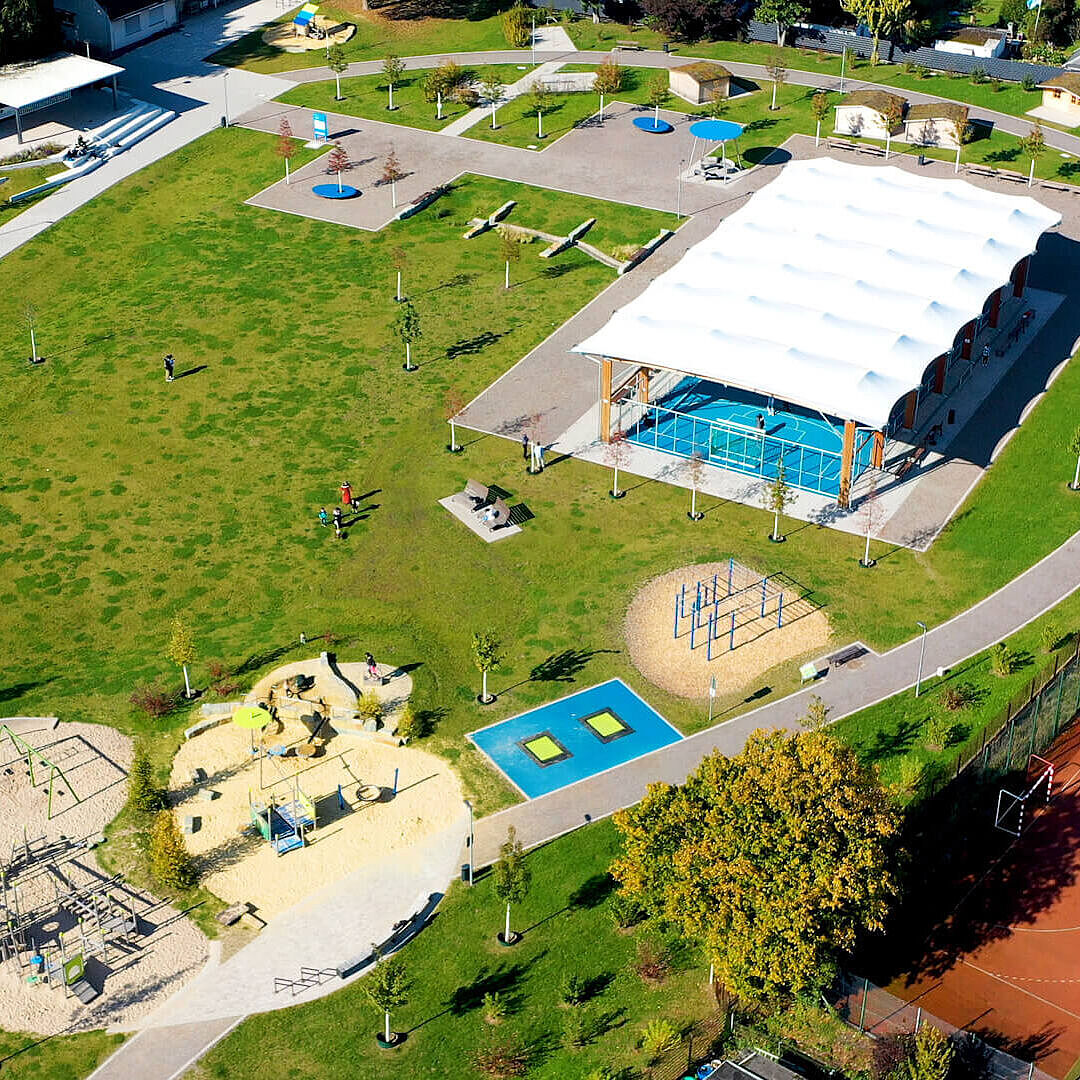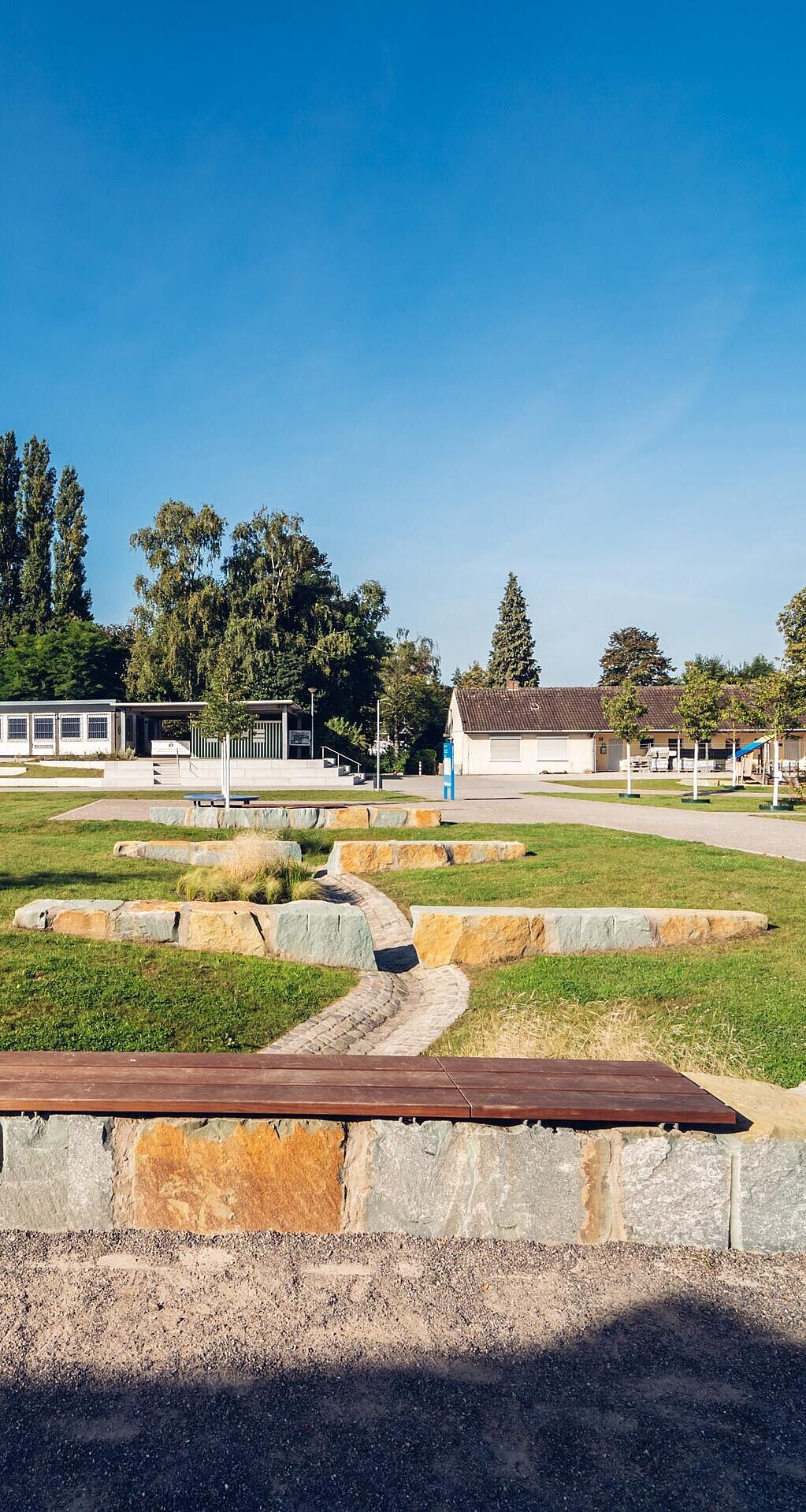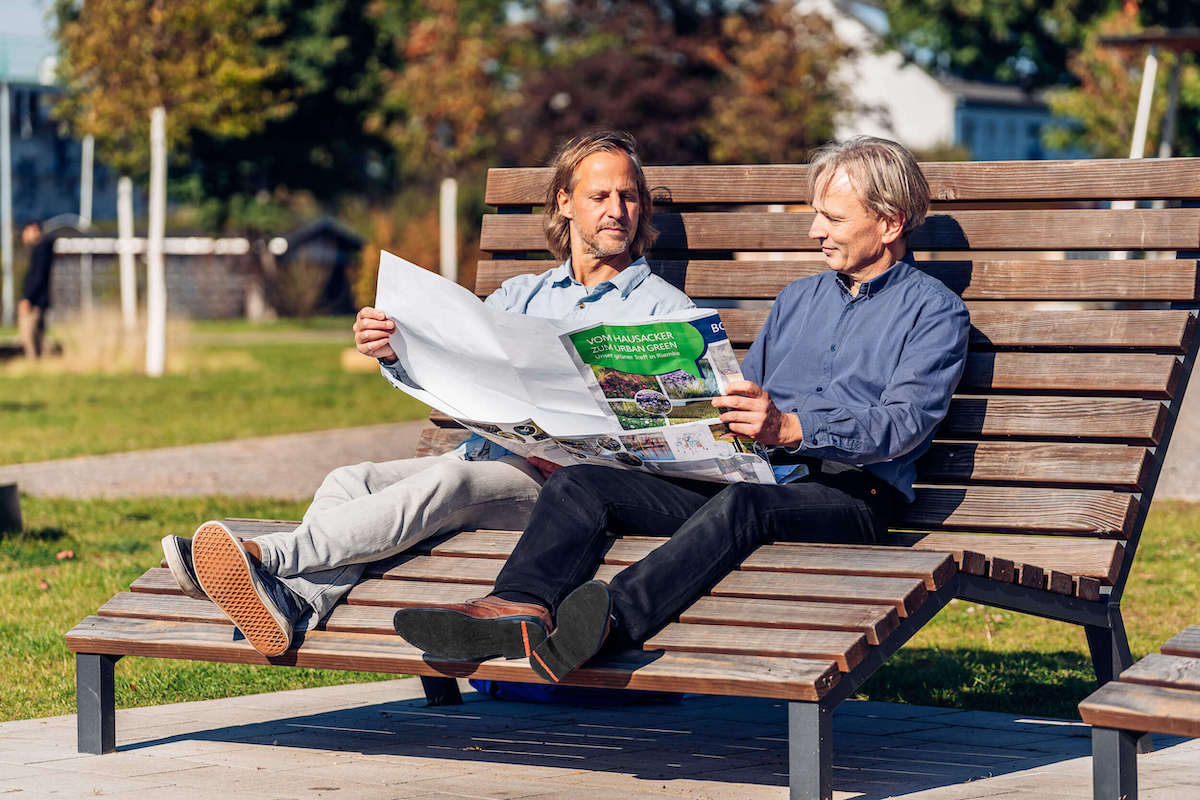Info
The construction work, which cost around €1.8 million, was financed by federal funds as well as grants from the North Rhine-Westphalia Ministry of Urban Development and the Emschergenossenschaft.

A multifunctional sports and leisure area for recreational use for young and old has been created on a former ash field in Bochum. It represents the identity of the neighbourhood, is open to all citizens and protected from heat waves and heavy rainfall by an innovative system of infiltration trenches.
A game of football at the outdoor sports hall, children squealing on the nest swing and senior citizens laughing over a game of boules: thanks to the Bochum Department of Sport and Exercise, a recreation area and meeting place for all ages has been created on what was once a derelict ash field.
The park-like green spaces in the middle of an allotment garden in Bochum Riemke has been transformed into a blue-green meeting place, with ground-level trampolines and accessible exercise facilities, as well as a variety of sports equipment and seating areas. In 17 months, the almost 15,000 square metre area was transformed into a multifunctional leisure facility. The effects of climate change were also taken into account, to combat the urban heat island effect and use innovative water management strategies to create a sponge city.
“At the heart of the climate-friendly measures are two extensive infiltration swales, which are connected to a modern drain trench system below the surface,” explains Dr Marko Siekmann, city coordinator of the Klima.Werk in Bochum. “Thanks to this innovative system, we were able to separate the roof surface of the outdoor sports hall from the sewer system. As a result, the rainwater downpipes no longer end up in the sewerage system but instead in paved channels through which the water can run off into the green basins”.

Once there, it can slowly seep away and flow into the tree trenches. These are underground storage structures filled with coarse gravel that can absorb large amounts of water. This alleviates flooding caused by extreme rainfall, as well as dry spells during which the water reservoir helps the trees and plants on the surface. And there are a lot of them: More than 60 herbaceous perennials, shrubs and trees have been planted on the former football pitch as part of the climate change adaptation measures.
For visitors from the densely populated surrounding area, time spent outdoors in green surroundings is a welcome opportunity for recreation. The vegetation also has other benefits. For example, the evaporation of water through the leaves helps to improve the microclimate by cooling the air. The plants also contribute to local biodiversity. The abundance of flowers is particularly appreciated by bees and insects.
“The redesigned recreation area has greatly improved the quality of life for local people,” says Thorsten Pacha of Bochum's civil engineering office. “Towards the end, the ash field looked like nothing more than an overgrown area where children no longer played. But if you look around today, you will find a lively meeting place with excellent facilities”. The modern space has been created with the help of local people, whose ideas have been incorporated into the redesign.
I would also like to encourage other cities in the Ruhr area to apply for funding from the Klima.Werk - as it could help your vision of sponge cities to become reality very soon

Dr Marko SiekmannCity coordinator of the Klima.Werk in Bochum

The construction work, which cost around €1.8 million, was financed by federal funds as well as grants from the North Rhine-Westphalia Ministry of Urban Development and the Emschergenossenschaft.
Am Hausacker 43A
44807 Bochum
Copyright ©
Images: Klima.Werk/EGLV